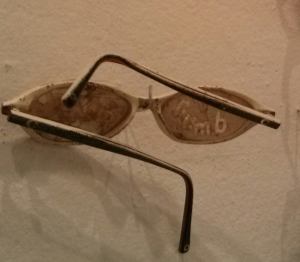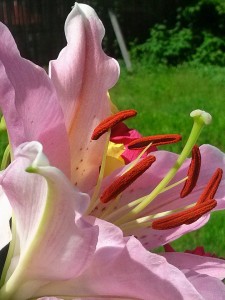Learning About Trauma and the Body by Watching Animals
My notes from webinar. All animals in the wild, most, experience threat or predation, Levine said, while participating in the Rethinking Trauma free webinar series (for live video and audio) series through http://www.nicabm.com/treatingtrauma2014/pgu4-info/ hosted by Ruth Buczynski, PhD.
What I first started discovering trauma in late 60’s and 70’s, Levine said, I was finding what kind of seemingly minor events could lead to symptoms we now call trauma or PTSD. In animals, Levine saw self-correcting mechanisms after threat, in animals and thought that since we share brain stem and limbic system with animals there must be something the human animal doing to interfere with rebounding from events. Levine talked about how he noticed, at first, that the way animals responded to threats included:
- shaking
- trembling
- deep spontaneous breath
Once chased and having escaped, he said, the animals could discharge the extra energy (from flight or fight).
He said he realized that human animals were preventing this from happening because they were afraid of sensations that bring animals back….
I thought we didn’t have same mechanisms or we have them but are suppressing them. This led to somatic processing http://www.traumahealing.com/somatic-experiencing/

Artwork by Christine Cissy White & Margaret Bellafiore (who took photo)
He looked at where people are stuck:
- Flight?
- Fight?
- Freeze?
- Collapse?
And then how to help people through those stuck places and also to develop resilience for future events.
Flute & Mango Tree & Community Support through Grief
Levine, interested in studying how shamans around the world help people heal and deal with two causes of disease:
- Fright paralysis or soul loss (what we generally refer to as trauma)
- Being hexed or someone casting a spell on ill person
Levine was most interested in how the shamans worked with people, particularly with fright paralysis because it’s what he was working with in people (with trauma). He told the story of taking a 20-hour drive and 3-hour hike to get to a village in Brazil to meet with the Chief here in his own words via a video.
He described how he arrived (didn’t catch name of the village or location) and that he was “exhausted,” and “panting.” The chief first offered him a glass of water. The village had just installed the first shower and he cooled in that and was then invited by the chief to sit by a mango tree. Levine asked the Chief a question, right away, about how he works with people.
“Let’s hold a minute” the Chief said and started to play a flute.
There were three or four other flutes out under the tree and Levine asked, “Can I play one?”
“Of course, that’s why they are here” the Chief said.
Levine said, “I just felt myself finally calm down from morning to be present.
“Now I’ll try to answer question” the Chief said.
Levine told how the Chief knew the word trauma, said, “We take this very seriously. We believe that the main cause of what we’d call PTSD is a breakdown in the fabric of the tribe.” “I wasn’t expecting that,” said Levine.
SHARED GRIEF & TRIBAL SUPPORT
He also told about how while he was visiting the same village in Brazil he saw a woman who had been pregnant, was a diabetic and taken into hospital into town which was a 3 to 4 hour hike. The babies were born still, dead, so she was in deep shock. At hospital, they wanted to give her shock treatment. In middle of the night, Chief and daughter (princess) went into the hospital, they abducted and brought her back.
Levine saw her. She was staring into space. The whole tribe, which was about 26 people did their particular dance. There was a fire. The dance steps were very simple but after doing it for five or ten minutes Levine said he was definitely in an altered state of consciousness. But Levine did the dance and kept observing the woman.
First, second and third night, Levine said the woman kept staring into space. But on the fourth night, she joined group, danced, and then broke down sobbing. Then, after entire group sobbed with her. Then she was o.k. She had sorrow, Levine said, of course, because she lost her babies. But she was back.
Our fracture from one another is a deep source of pain. If we really had the support to enter these difficult places and the support to go through them…. References: Webinar watched through: http://www.nicabm.com/treatingtrauma2014/pgu4-info/ For More on Peter Levine’s Work: http://www.traumahealing.com/somatic-experiencing/
You Matter Mantras
- Trauma sucks. You don't.
- Write to express not to impress.
- It's not trauma informed if it's not informed by trauma survivors.
- Breathing isn't optional.
You Are Invited Too & To:
- Heal Write Now on Facebook
- Parenting with ACEs at the ACEsConectionNetwork
- The #FacesOfPTSD campaign.
- When I'm not post-traumatically pissed or stressed I try to Twitter, Instagram & Pinterest.
[…] it leads to some unintended consequences as well,” said Peter Levine in the webinar series (Part One and Part Two), Rethinking […]